Inside Florida’s Alligator Hunting Season
Credit to Author: Zak Bennett| Date: Mon, 13 Nov 2017 17:00:00 +0000
This story is part of OUTER LIMITS, a Motherboard series about people, technology, and going outside. Let us be your guide.
Florida’s alligator hunting season starts in August and runs through early November. This year, 6,000 permits were awarded to hunters across the state. Last year, they captured 7,145 gators.
There are now around 1.3 million alligators in Florida, and they are no longer protected as an endangered species like they were in the 1970s. Part of the hunting program is geared toward “nuisance” alligators, which can appear in neighborhoods and sometimes attack people, but animal rights protestors still organize regularly in opposition to the hunts.
Alligator hunters like Matt Magner usually have tags that allow them to hunt in specific areas, like the stormwater treatment areas (STAs) of reservoirs. They use hooks and bait to get the gators, and then can choose to keep their kill or sell it for food processing, skins, or heads.
“They have the same instincts just like a deer and hog,” said Magner, who has been hunting alligators for nine years. “They’re a top predator, the only thing they’re scared about are other gators. They’re very intelligent.”
I went alligator hunting with Magner and his friends near Lake Okeechobee as they tried to catch alligators before the end of the season.
The hunters drive alongside a Stormwater Treatment Area canal in South Bay. Stormwater Treatment Areas (STAs) are used to catch the outflow from Lake Okeechobee, and have become some of the most popular places for alligators to reside in Florida.
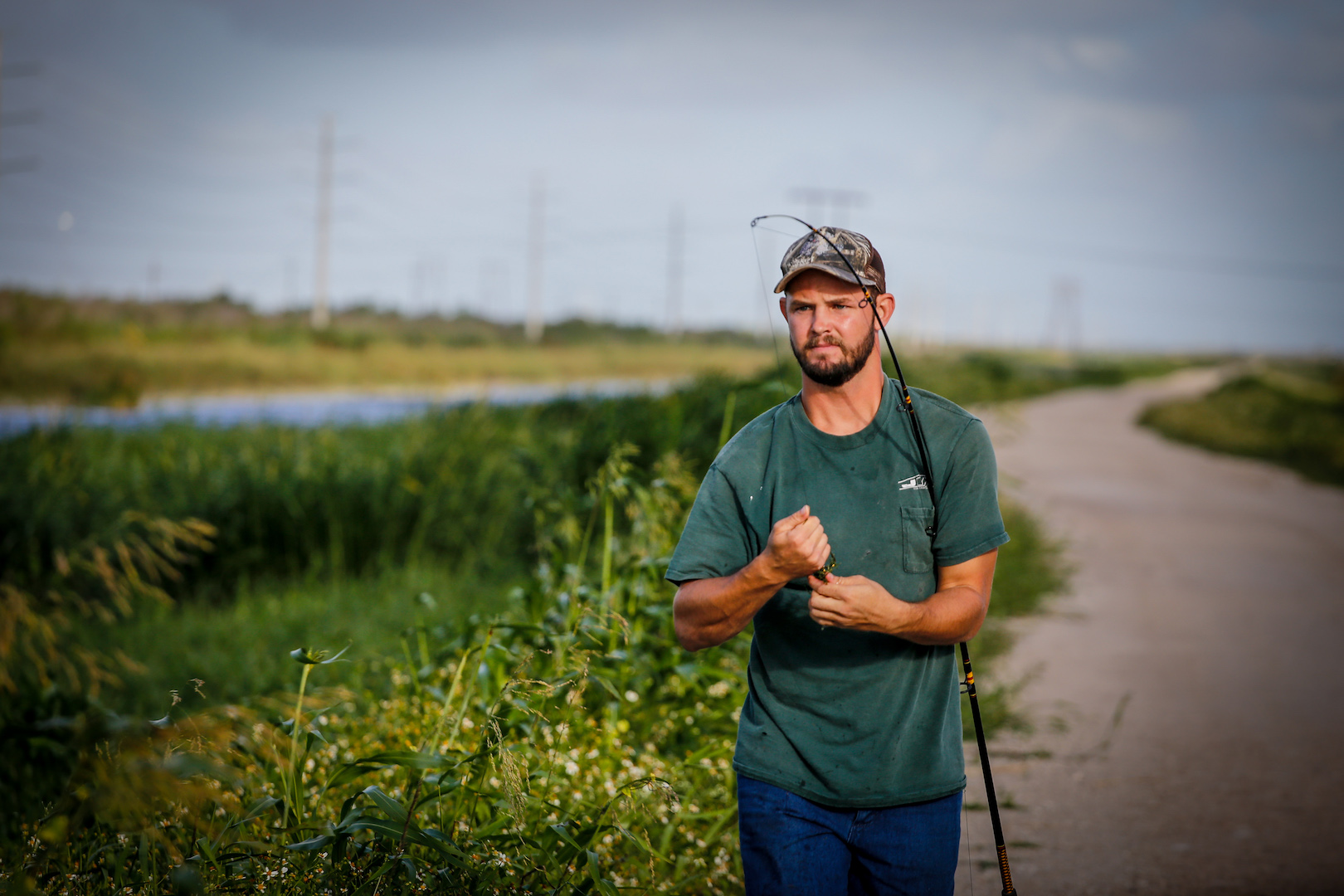
Magner, who is from Lake Worth, spots an alligator and hurriedly walks toward the canal bank while preparing his fishing pole to cast out. Alligator hunters use fishing poles and hooks to initially lure alligators closer to the canal banks.
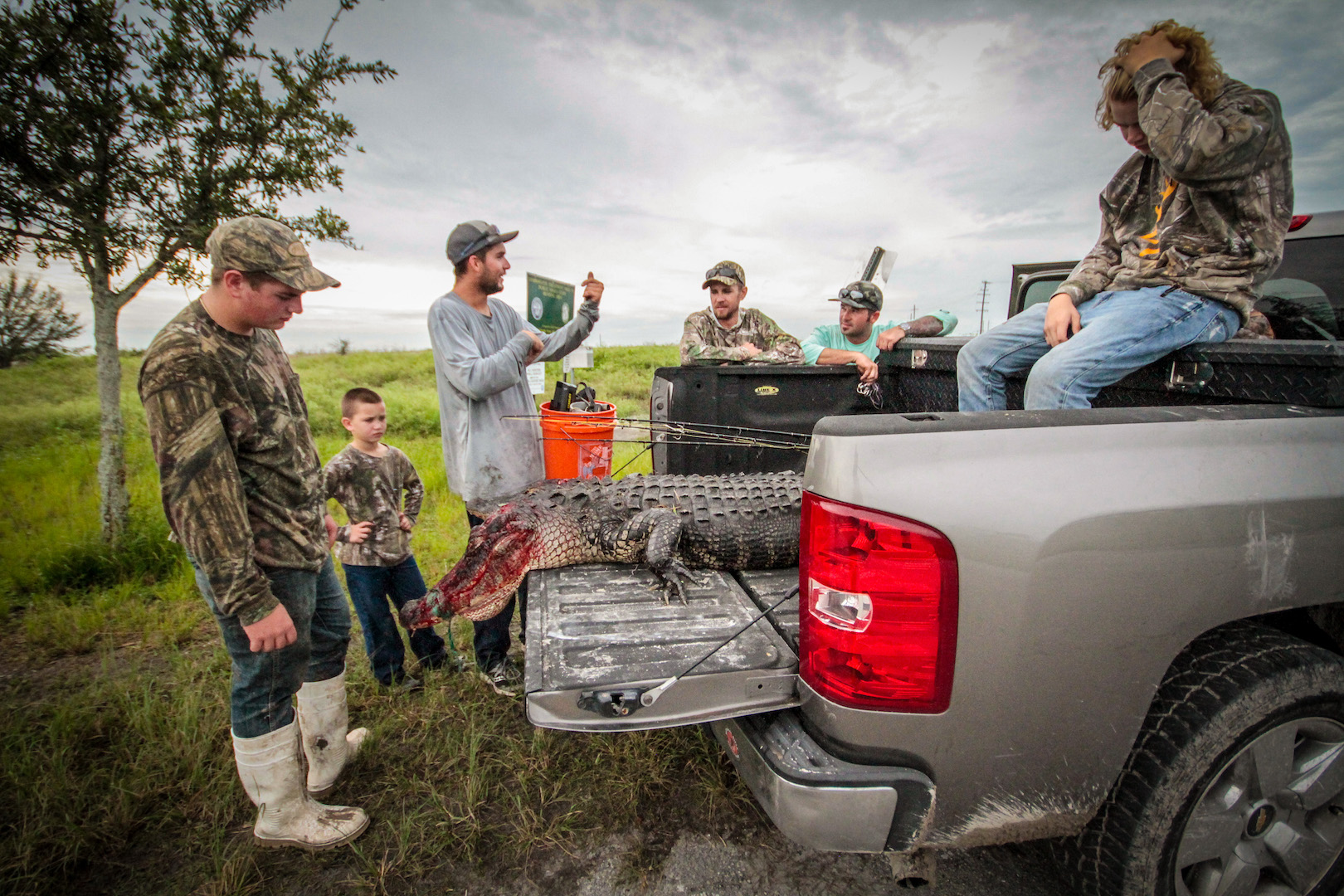
Jeremy Runyon, Jake Baker, Joe Miller, Justin Baker, Kevin Henkel and Tyler Huntoon stand around the back of a truck after a successful early morning of alligator hunting, at an STA in South Bay. Alligator hunting is only permitted between the hours of 5 PM and 10 AM.
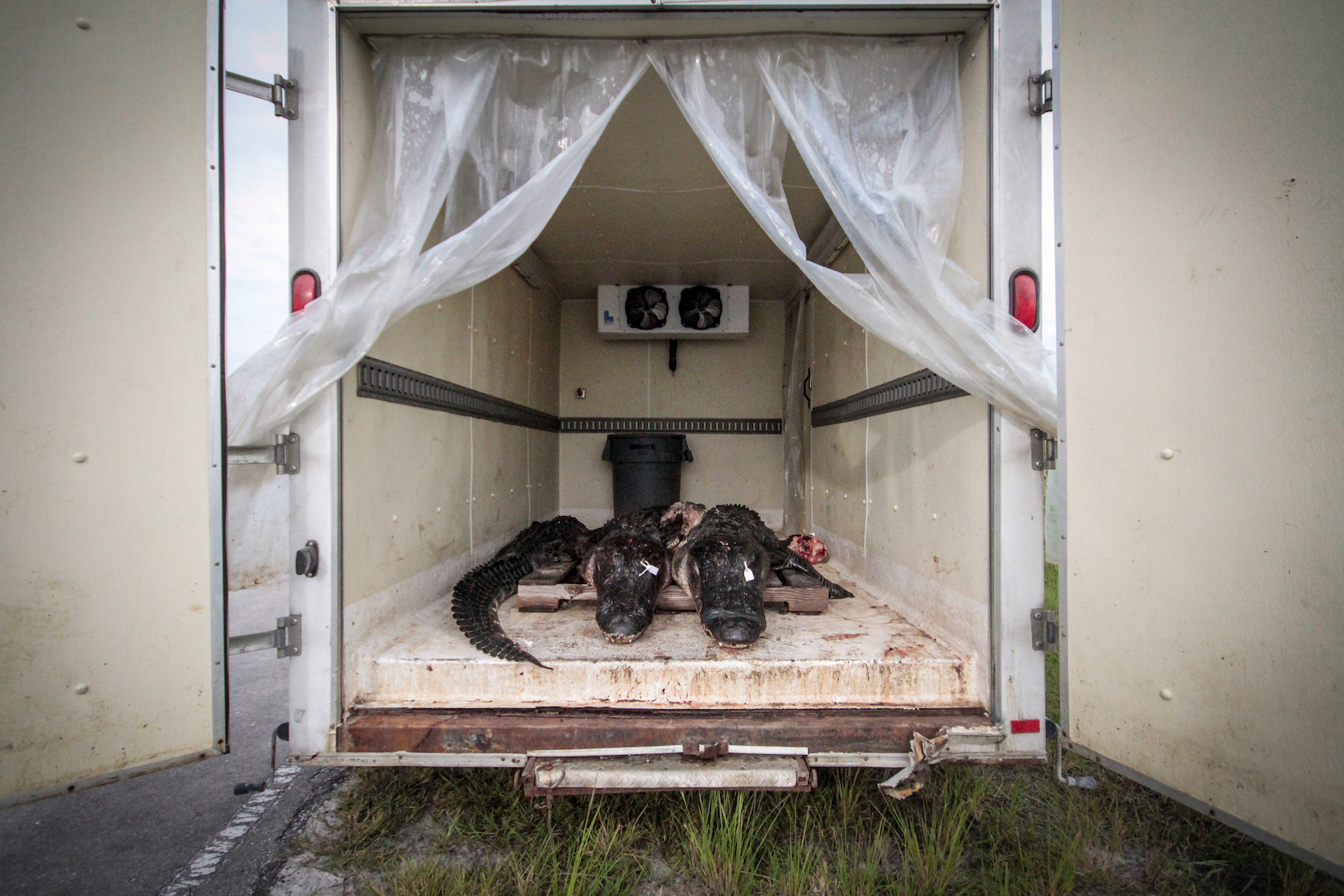
A group of recently killed alligators sit in the back of an All American Gator Co. cooler truck. Company representatives wait outside the hunting grounds throughout the night and morning to buy dead gators from the hunters. Alligator hunting is one of the few hunting sports in the state where the hunter is allowed to sell their catch. The company will buy the gator directly from the hunter for $15 a foot or they will filet and preserve the hide and give it back to the hunter for a fee. Gator meat is sold at wholesale for $8 a pound.
Groups of alligator hunters drive up and down the fingers of the Stormwater Treatment Area canal in South Bay, late into the night and early morning in search of alligators.
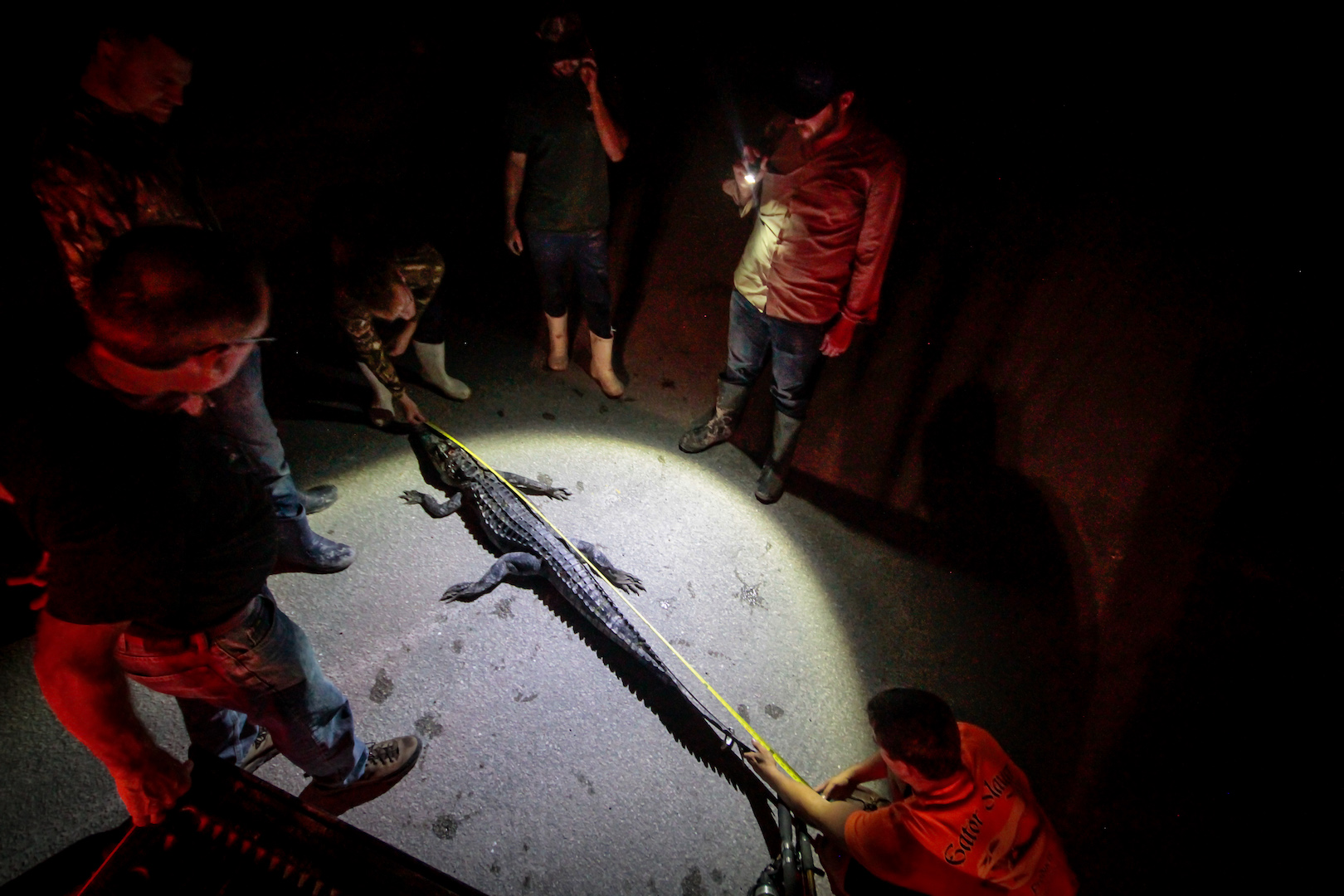
Kyle Paino, 25, holds a light over a dead alligator as two other hunters measure the alligator at an STA in South Bay. The alligator measured 7 feet and 2 inches.
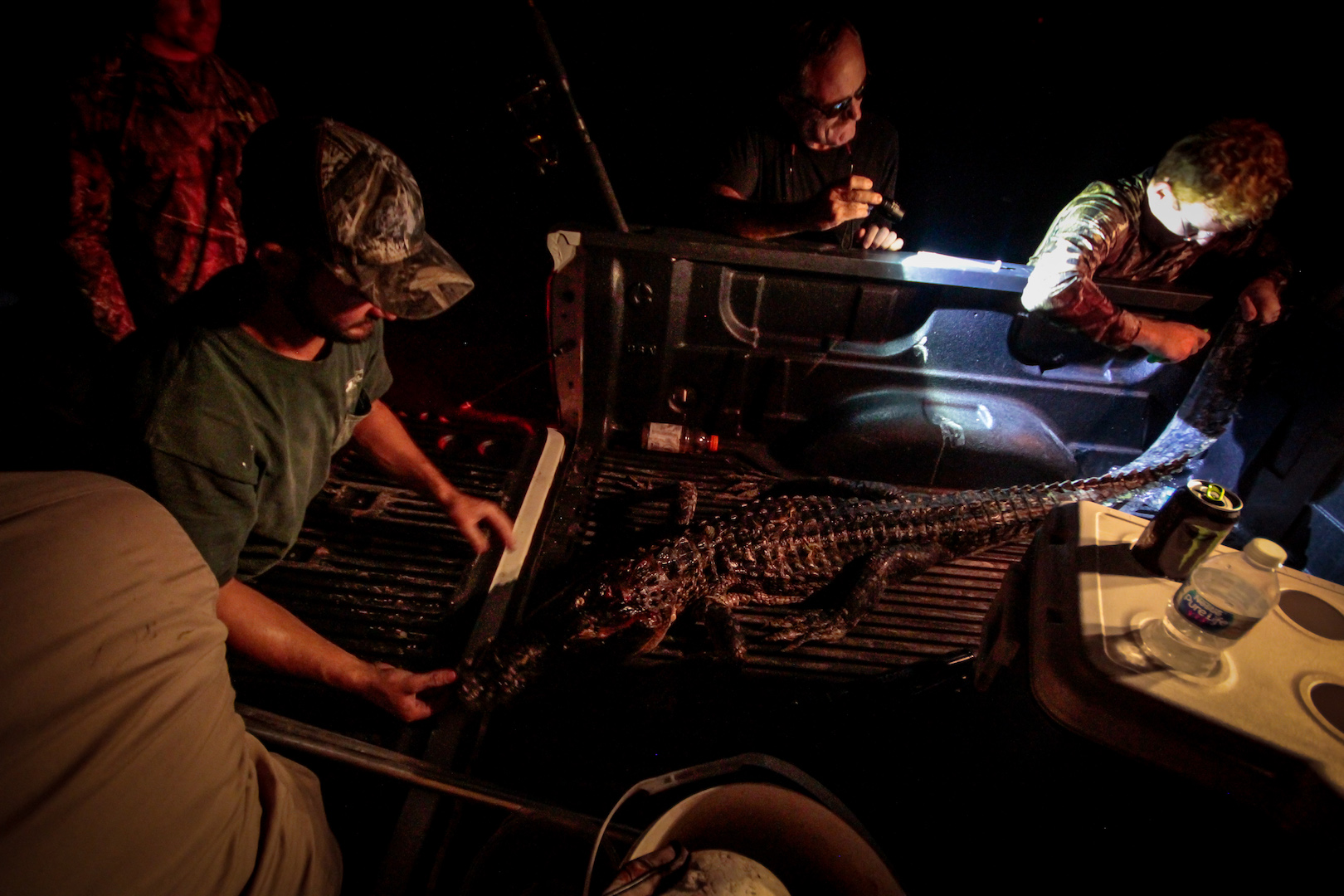
Magner and his crew of hunters situate a gator in the back of Chris Hoslinger’s truck at an STA in South Bay. This would be one of their last kills before the end of hunting season.
Images and video by Zak Bennett. Gifs by Lia Kantrowitz.
Get six of our favorite Motherboard stories every day by signing up for our newsletter.